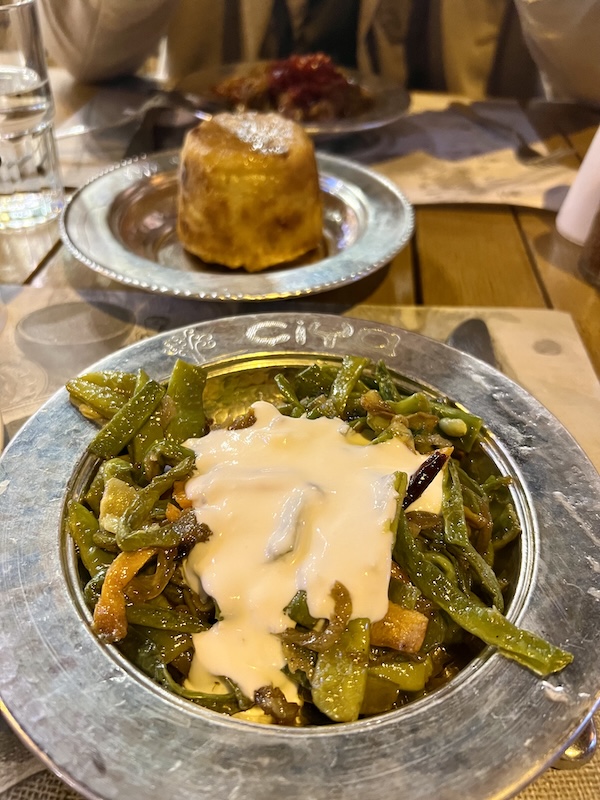It is impossible for a tourist to thoroughly understand what and where is the best thing or place to eat when visiting Istanbul. Estimated to have 60,000 restaurants in the city itself, and blog after blog of how to “dine like a local,” making the most of your meals requires just experimenting for yourself.
As we made our way around the Asian side of Istanbul, one restaurant kept coming up as the “you gotta try it” place: Ciya Sofrasi.
It’s a simple restaurant nestled amongst the busy and packed rows of Kadiköy Market. This street market is a spot for locals and tourists. It’s somewhere you can get fresh and quality seafood, cheeses, and olives. You can also come to get your shopping fix with the infamous bazaar-style shops Istanbul is known for. Or you can try one of the dozens if not hundreds of restaurants that line its pedestrian streets with everything from local fare to international takes.
Ciya Sofrasi leans heavily into local fare. Chef Musa Dağdeviren has been collecting recipes from around Turkey to assemble the rotating menu. So much so that the menu updates daily, according to the time of year and what is in supply. With that, you’re guaranteed a high-quality experience and the ability to try something new, which is exactly what we did.
Starting with the Quince with Beef:
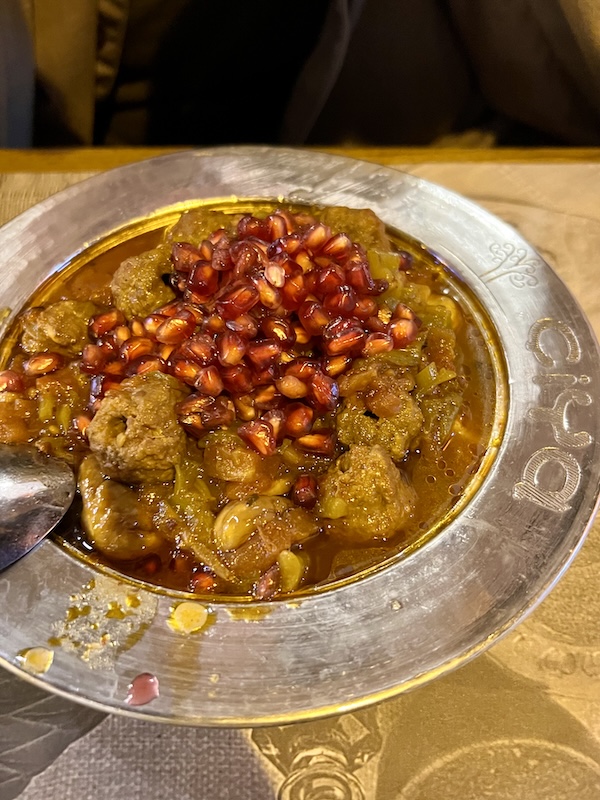
Beef, parsley, pomegranate, onion, spices, and quince stew together to make this hearty dish.
Tender beef pairs with the subtle sweetness and tartness of quince, a fruit native to the Middle East and surrounding regions.
We went in November when pomegranate season was still at its peak, so several dishes featured the superfood. Pomegranate plays a prominent role in Turkish cuisine due to its deep cultural and symbolic significance. It is regarded as a symbol of abundance and fertility, often referred to as a “fruit of paradise” in religious and historical contexts. Streets are lined with fresh squeezed pomegranate juice for sale and dishes like the above are filled with it. For me, this was a first, and I absolutely loved it.
The real flavor and taste here come from that magic blend of spices. The spices typically used, like cinnamon or allspice, are complex and more robust than the salt and pepper of my cooking. The combination of flavors is (perhaps more than anywhere else) harmonious, interesting, and unique. The dish may not be for all palettes but it does showcase the depth of Turkish cooking and the rich history preserved from Ottoman culinary traditions.
Next we ordered a vegetarian classic: Beans with Yogurt:
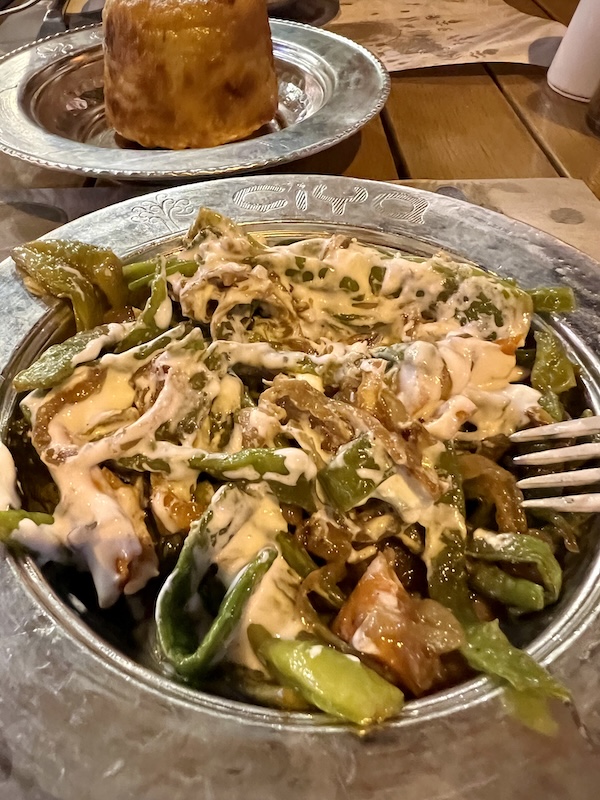
Roasted and sauteed local green beans are served with a generous helping of yogurt on top.
In Turkish cuisine, vegetarian dishes hold a special place, celebrating the region’s abundant fresh produce and bold, aromatic flavors. If there were one country I would want to be a vegetarian in, it would be Turkey.
This green beans dish starts with tender, locally sourced green beans that are roasted to enhance their natural sweetness. They’re then sautéed with caramelized onions and seasoned with traditional Turkish spices like sumac or Aleppo pepper, adding layers of earthy, tangy, and slightly smoky flavors. To finish, the beans are served with a dollop of creamy yogurt, balancing the spices while adding richness to the dish.
There’s a tang that I can’t place my finger on. It makes the dish totally unique and unlike buranija, which is what I thought it would be equivalent to in flavor. Instead, it is uniquely its own with notes that aren’t apparent by just looking at the simple ingredients on the plate. Mix the yogurt thoroughly throughout and you have another win with the flavor combinations.
It’s this simplicity of the ingredients, paired with thoughtful preparation, that reflects the essence of Turkish cooking: fresh, vibrant, and deeply satisfying. This dish is both comforting and delicious. While it is not on offer all of the time, you can see the extensive vegetarian menu with dozens of dishes featuring green beans here. While most are not year-round, one of them is bound to be. Also, see what I mean with it being a great place to be vegetarian?!
And as final sides to go along our mains, Lentil Soup and a Pilaf:
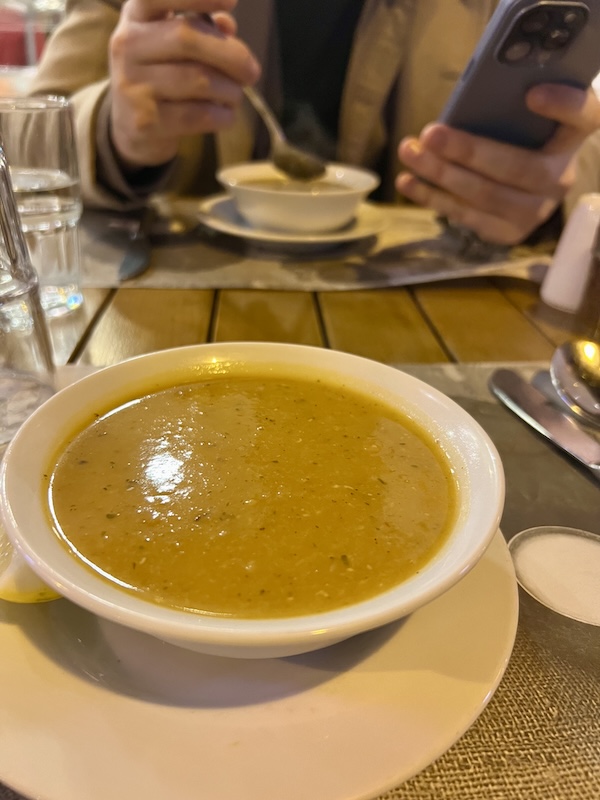
Lentil soup has deep roots in Turkey’s culinary traditions, commonly served as a starter in homes and restaurants alike. It’s considered a staple.
Known as Mercimek Çorbası, this traditional soup is simple yet incredibly flavorful, embodying the essence of Anatolian cuisine. It’s often made with red lentils, onions, carrots, potatoes, and a touch of tomato paste, all simmered together until silky smooth. A drizzle of olive oil infused with paprika or mint often tops it off.
The taste is earthy and hearty from the lentils, slightly sweet from the carrots, and subtly tangy from the tomato paste. Spices like cumin and a hint of lemon elevate its flavor, making it warm and comforting with every spoonful. This soup was so good, especially as the transition to colder months began, that we each ordered another small bowl.
And the Pilaf. In its simplest form, pilaf is made by sautéing rice or another grain (such as bulgur or freekeh) in butter or oil before simmering it in a flavorful broth. Ingredients like onions, spices, and sometimes vermicelli noodles are often added to enhance the dish.
Turkish pilaf is especially known for its variations. It can be made with simple ingredients like rice, broth, and butter, or elevated with additions like chickpeas, nuts, dried fruits, or even meat, depending on the region and occasion. Ours had spinach, peans, and shredded chicken. While this is often a side, it can serve as a main meal when eaten in the right quantities. Surprised rice wasn’t offered with the dishes, we were happy to order this meatier version and thoroughly enjoyed it’s dedication to taste and texture.
I should note, it’s really good.
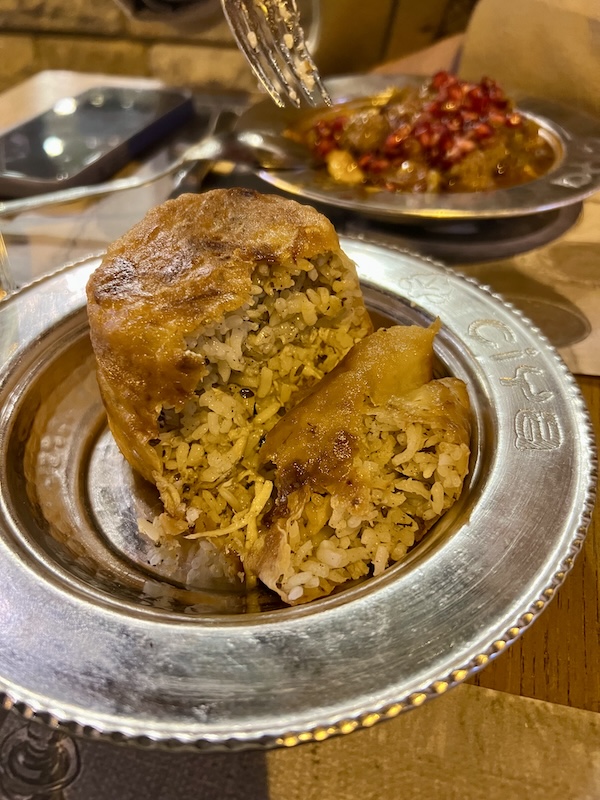
As I’ve mentioned before, like all of Istanbul, the restaurant owners have caught on to the idea that tourists will pay more to dine out. This meal not too long ago would have surely come in around $10. Now, the total for the plates above was slightly over $50. Considering they are 2 small main dishes and accompanying sides, this is very overpriced, especially in Istanbul.
For a country known for its hospitality and generosity just the last time I was there 3 years ago, it’s come a long way in terms of price. The people thankfully, can still be described using those two adjectives.

